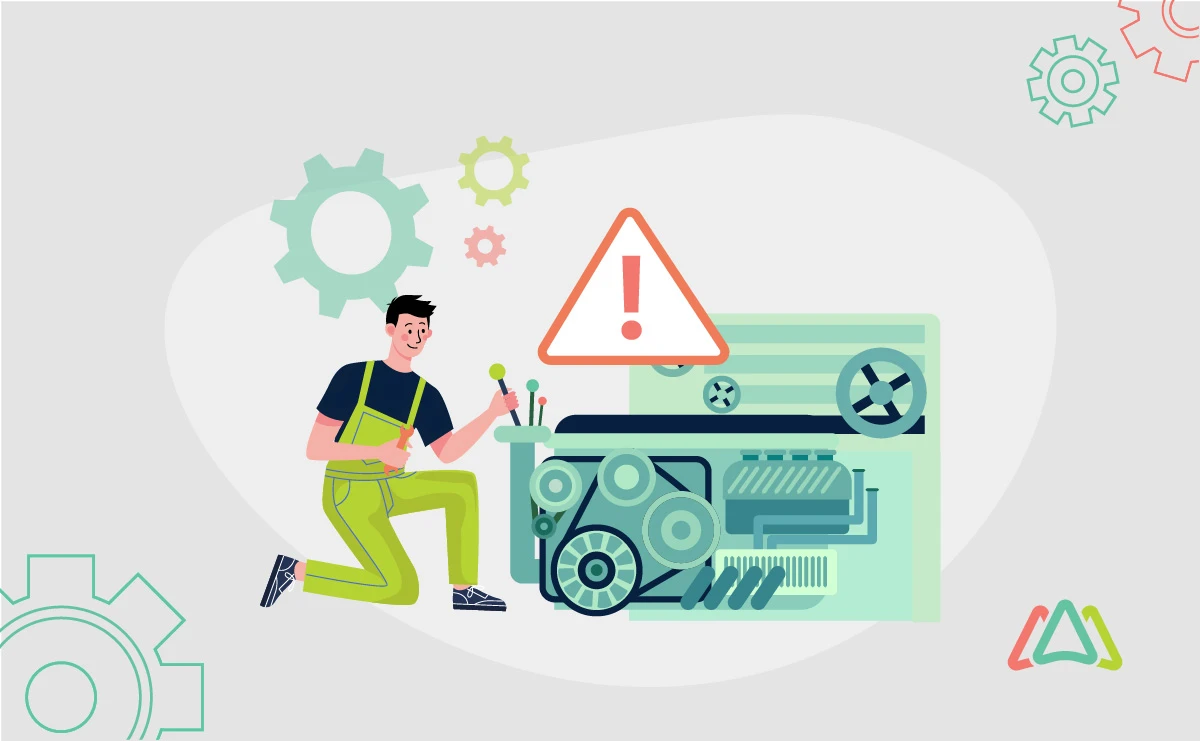
Navigating Crisis: A Comprehensive Guide on Emergency Maintenance Procedures
Emergencies are unpredictable events that can disrupt operations, compromise safety, and incur significant costs if not handled swiftly and effectively. In the fast-paced world of maintenance management, unforeseen emergencies can arise at any moment, threatening business operations and jeopardizing the safety of personnel. Emergency maintenance refers to the immediate and unplanned repairs or interventions required to address critical issues that threaten the safety, functionality, or integrity of facilities, equipment, or assets. These emergencies can include equipment failures, infrastructure damage, safety hazards, or environmental incidents that demand urgent attention to mitigate risks and minimize disruptions.
Establishing comprehensive emergency maintenance procedures is essential for organizations to respond effectively to unexpected crises. These procedures provide a structured framework for identifying, assessing, and addressing emergencies quickly, ensuring the safety of personnel, protecting assets, and maintaining operational continuity. By having predefined protocols in place, organizations can minimize downtime, reduce costs associated with emergency repairs, and enhance overall resilience in the face of adversity.
Understanding Emergency Maintenance
Emergency maintenance is the swift and decisive response to unexpected issues that threaten the safety, functionality, or integrity of facilities and equipment. In this section, we'll explore the definition and types of emergencies, the risks of ignoring emergency maintenance, and the importance of prompt action.
1. Definition and Types of Emergencies
Emergency maintenance encompasses a wide range of unforeseen situations that require immediate attention. These emergencies can include:
- Equipment Failures: Sudden breakdowns or malfunctions of critical equipment, such as HVAC systems, electrical panels, or production machinery, that disrupt operations.
- Safety Hazards: Environmental or structural hazards, such as gas leaks, fires, floods, or structural collapses, that pose risks to personnel and property.
- Security Breaches: Intrusions, vandalism, or security system failures that compromise the safety and security of facilities and assets.
- Natural Disasters: Events such as earthquakes, hurricanes, or severe weather conditions that cause widespread damage and require rapid response and recovery efforts.
Each type of emergency presents unique challenges and requires specific protocols for mitigation and resolution.
2. Potential Risks and Consequences of Ignoring Emergency Maintenance
Ignoring emergency maintenance can have severe repercussions for organizations, including:
- Safety Hazards: Failure to address safety hazards promptly can result in injuries, fatalities, or long-term health consequences for personnel and occupants.
- Asset Damage: Unresolved equipment failures or environmental hazards can lead to extensive damage to facilities, machinery, and infrastructure, resulting in costly repairs or replacements.
- Operational Disruptions: Downtime caused by emergencies can disrupt operations, delay production schedules, and impact revenue generation, leading to financial losses and reputational damage.
- Regulatory Non-Compliance: Neglecting emergency maintenance may violate regulatory requirements or industry standards, exposing organizations to fines, penalties, or legal liabilities.
3. Importance of Fast Action
Prompt action is essential in emergency maintenance to mitigate risks and minimize the impact of unforeseen events. Quick response time allows organizations to:
- Ensure Safety: Rapid intervention helps protect the safety and well-being of personnel, occupants, and visitors by addressing hazards and implementing safety measures.
- Prevent Further Damage: Early detection and intervention can prevent minor issues from escalating into major problems, minimizing damage to facilities, equipment, and assets.
- Maintain Continuity: Swift resolution of emergencies helps maintain business continuity, preventing disruptions to operations and preserving customer satisfaction and loyalty.
- Demonstrate Preparedness: Effective emergency response demonstrates organizational preparedness, resilience, and commitment to safety, enhancing trust and confidence among stakeholders.
Preparing for Emergency Maintenance
1. Establishing Clear Communication Channels
Effective communication is the cornerstone of successful emergency response. Organizations must establish clear and reliable communication channels to ensure that critical information is conveyed promptly to all stakeholders. This includes implementing communication systems such as emergency hotlines, text alerts, and intercom systems and designating communication protocols and points of contact for different types of emergencies.
2. Designating Emergency Response Team and Roles
Assigning responsibilities and roles within an emergency response team is vital for ensuring swift and coordinated action. Organizations should designate individuals to specific roles, such as incident commander, safety officer, and communications coordinator, based on their expertise and experience. Each team member should be trained and prepared to fulfill their duties effectively during emergencies.
3. Creating an Emergency Response Plan
- Risk Assessment: Conducting a comprehensive risk assessment is the first step in developing an effective emergency response plan. This involves identifying potential hazards, assessing their likelihood and severity, and prioritizing areas of concern based on their impact on safety and operations.
- Identifying Critical Systems and Assets: Organizations must identify critical systems, equipment, and assets that are essential for maintaining operations and safety. These may include power supplies, HVAC systems, fire suppression systems, and communication networks. Prioritizing the protection and preservation of these assets is important during emergency response efforts.
- Establishing Protocols for Different Types of Emergencies: Different types of emergencies require tailored response protocols. Organizations should develop specific procedures for addressing various scenarios, such as fires, chemical spills, natural disasters, or security breaches. These protocols should outline step-by-step instructions for mitigating risks, evacuating personnel, and coordinating emergency services.
4. Conducting Regular Training and Drills
Regular training and drills are essential for ensuring that employees are prepared to respond effectively to emergencies. Organizations should conduct hands-on training sessions, tabletop exercises, and drills to familiarize employees with emergency procedures, test communication systems, and identify areas for improvement. Training should be ongoing and include all personnel, including frontline employees and senior management.
What is an Emergency Maintenance Procedure?
An Emergency Maintenance Procedure is a set of protocols and guidelines designed to address sudden and unexpected issues that pose immediate risks to the functionality, safety, or integrity of facilities, equipment, or personnel. This procedure outlines the steps to be taken in response to emergencies, ensuring a swift and coordinated response to mitigate risks, minimize disruptions, and safeguard assets.
Components of an Emergency Maintenance Procedure
An effective emergency maintenance procedure document typically consists of several key components, each designed to guide personnel through the steps necessary to respond to various types of emergencies. Below are the essential components of an emergency maintenance procedure:
1. Introduction
This section provides an overview of the emergency maintenance procedure document, including its purpose, scope, and applicability.
2. Emergency Contact Information
A list of emergency contacts, including internal personnel (such as emergency response team members, facility managers, and security personnel) and external contacts (such as emergency services, utility providers, and regulatory agencies).
3. Roles and Responsibilities
Clearly defined roles and responsibilities for personnel involved in emergency response, including incident commanders, first responders, communications coordinators, and support staff. This section outlines the duties of each role and their respective authority during emergencies.
4. Emergency Response Protocols
Step-by-step instructions for responding to different types of emergencies, including procedures for assessing the situation, activating alarms and communication systems, evacuating facilities, and mitigating risks. Protocols should be tailored to address specific scenarios, such as fires, chemical spills, natural disasters, or security breaches.
5. Emergency Equipment and Resources
A list of emergency equipment and resources available on-site, such as fire extinguishers, first aid kits, emergency generators, and personal protective equipment (PPE). This section provides guidance on the proper use and maintenance of emergency equipment.
6. Evacuation Plans and Assembly Points
Diagrams or maps illustrating evacuation routes, emergency exits, assembly points, and designated safe areas. Evacuation plans should include procedures for safely evacuating personnel, accounting for occupants, and coordinating with emergency services.
7. Communication Procedures
Protocols for activating communication systems, establishing communication channels, and disseminating information during emergencies. This includes procedures for notifying personnel, contacting emergency services, and broadcasting announcements or updates.
8. Shutdown Procedures
Instructions for safely shutting down critical systems, equipment, or utilities to prevent further damage or mitigate risks during emergencies. Shutdown procedures should outline the sequence of steps, safety precautions, and responsibilities for personnel involved.
9. Post-Emergency Procedures
Guidance on post-emergency activities, such as conducting damage assessments, restoring operations, and debriefing personnel. This section outlines procedures for documenting incidents, reporting findings, and implementing corrective actions to prevent recurrence.
10. Training and Drills
Requirements for training personnel on emergency procedures, conducting regular drills and exercises, and maintaining records of training activities. Training and drills are essential for ensuring that personnel are prepared to respond effectively to emergencies.
11. Appendices
Additional resources, references, or supplementary materials relevant to emergency maintenance procedures, such as checklists, forms, emergency contacts, or regulatory requirements.
Steps to Create and Implement Emergency Maintenance Procedures
Creating and implementing effective emergency maintenance procedures requires careful planning, collaboration, and ongoing refinement.
1. Assessing Organizational Needs and Resources
Before creating emergency maintenance procedures, organizations must conduct a comprehensive assessment of their needs, vulnerabilities, and resources. This assessment should include:
- Identifying potential emergency scenarios and their likelihood of occurrence.
- Evaluating existing resources, such as personnel, equipment, and infrastructure, available for emergency response.
- Assessing regulatory requirements and industry standards relevant to emergency preparedness and maintenance.
2. Involving Key Stakeholders in Procedure Development
Developing emergency maintenance procedures should be a collaborative effort involving key stakeholders from various departments and levels of the organization. This includes maintenance personnel, safety officers, facility managers, and executive leadership. By involving stakeholders in the development process, organizations can gain diverse perspectives, garner support, and ensure buy-in for the final procedures.
3. Documenting Procedures Clearly and Accessibly
Once procedures are developed, it's essential to document them clearly for easy reference during emergencies. Documentation should include:
- Step-by-step instructions for responding to different types of emergencies.
- Contact information for emergency response team members and external contacts.
- Protocols for activating communication systems, evacuating facilities, and coordinating with emergency services.
- Diagrams, maps, or visual aids illustrating evacuation routes, emergency shut-off locations, and assembly points.
- Documentation should be accessible to all relevant personnel and stored in multiple formats, such as printed manuals, digital files, and posted signage.
4. Training Staff on Emergency Maintenance Protocols
Training staff on emergency maintenance protocols is critical for ensuring that they can respond effectively in high-pressure situations. Training should cover:
- Familiarization with emergency procedures and protocols.
- Hands-on practice of emergency response tasks, such as operating fire suppression systems or conducting evacuations.
- Role-specific training for emergency response team members, including incident commanders, first responders, and communication coordinators.
- Regular refresher training sessions to reinforce knowledge and skills and accommodate turnover or changes in personnel.
- Training should be conducted regularly, incorporating both theoretical instruction and practical exercises to reinforce learning and preparedness.
5. Regularly Reviewing and Updating Procedures
Emergency maintenance procedures should be dynamic documents that evolve over time to reflect changes in organizational needs, resources, and best practices. Organizations should establish processes for:
- Regularly reviewing and evaluating the effectiveness of existing procedures.
- Soliciting feedback from stakeholders and incorporating lessons learned from real-world emergencies or training exercises.
- Updating procedures in response to regulatory changes, technological advancements, or organizational developments.
- Communicating updates to all relevant personnel and ensuring that they receive training on revised procedures.
Benefits of Utilizing a CMMS for Managing Emergency Work Orders
1. Centralized Information
CMMS consolidates all relevant information, including equipment data, maintenance history, and emergency procedures, into a single platform, ensuring that maintenance teams have immediate access to critical details during emergencies.
2. Automated Notifications
CMMS can automatically generate and dispatch notifications to relevant personnel when emergency work orders are created, ensuring that response efforts are initiated promptly and efficiently.
3. Prioritization and Escalation
CMMS enables maintenance managers to prioritize emergency work orders based on severity, impact, or criticality, ensuring that the most urgent tasks receive immediate attention. Additionally, escalation procedures can be defined to ensure that unresolved emergencies are promptly escalated to higher-level personnel.
4. Resource Allocation
With CMMS, maintenance managers can quickly assess available resources, including personnel, equipment, and spare parts, and allocate them accordingly to address emergency work orders effectively.
5. Real-time Work Order Tracking
CMMS provides real-time visibility into the status and progress of emergency work orders, allowing maintenance teams to track response efforts, monitor completion timelines, and identify any bottlenecks or delays.
Steps to Create and Assign Emergency Work Orders in CMMS
1. Initiation
Emergency work orders can be initiated manually by maintenance personnel or automatically triggered by sensors, alarms, or predefined criteria within the CMMS.
2. Prioritization
Maintenance managers prioritize emergency work orders based on severity, safety risks, operational impact, or other criteria, ensuring that the most critical tasks are addressed first.
3. Assignment
Once prioritized, emergency work orders are assigned to the appropriate personnel or teams within the CMMS, along with detailed instructions, deadlines, and any necessary resources.
4. Execution
Maintenance teams execute emergency work orders according to predefined procedures, leveraging the CMMS to access relevant information, record actions taken, and update task statuses in real time.
Tracking and Monitoring Progress with CMMS
1. Real-time Updates
Maintenance teams use CMMS to provide real-time updates on the progress of emergency work orders, including task completion, time spent, and any issues encountered.
2. Performance Metrics
CMMS systems generate performance metrics and KPIs related to emergency maintenance, such as response times, resolution times, and downtime reduction, enabling maintenance managers to evaluate effectiveness and identify areas for improvement.
3. Documentation and Reporting
CMMS software automatically records all actions taken and data collected during emergency maintenance activities, facilitating documentation and reporting for regulatory compliance, incident analysis, and continuous improvement initiatives.

Improve responsiveness, efficiency, and accountability with Click Maint CMMS
TABLE OF CONTENTS
Keep Reading
By 2026, CMMS platforms will no longer be the limiting factor in maintenance performance. ...
30 Dec 2025
Spare parts management within maintenance can make the difference between a problem-free ...
16 Dec 2025
Every maintenance team eventually faces the same question: When should we repair, and when ...
12 Dec 2025
Enterprise Asset Management (EAM) software has become a cornerstone for organizations aiming ...
12 Dec 2025
Unexpected equipment breakdowns can disrupt operations, increase repair costs, and reduce ...
11 Dec 2025
Businesses are always looking for ways to improve efficiencies, reduce costs, and improve ...
9 Dec 2025
The longest U.S. federal government shutdown to date lasted 43 days, beginning on October 1, ...
5 Dec 2025
Every maintenance professional faces it sooner or later — that critical time when an aging ...
18 Nov 2025
The term 'best' is often used loosely, without a clear understanding of its context or ...
14 Nov 2025
In the not too distant past, maintenance strategies have been defined by reaction—fixing ...
13 Nov 2025
Tax season is the time of year that often sends a ripple of anxiety through many of us. The ...
11 Nov 2025
Selecting a Computerized Maintenance Management System (CMMS) can, at first glance, be an ...
4 Nov 2025
In healthcare facilities, equipment uptime involves more than achieving operational ...
31 Oct 2025
Companies are subject to economic ups and downs, also known as economic volatility. Today, ...
30 Oct 2025
Maintenance challenges are a constant struggle, with unplanned downtime costing manufacturers ...
27 Oct 2025
Last winter, a maintenance technician at a U.S. paper mill ignored a predictive alert that ...
10 Oct 2025
Many organizations proudly say they “have a CMMS,” but ownership alone doesn’t equal ...
9 Oct 2025
Every maintenance team is under pressure to do more with less. Unplanned downtime is often ...
7 Oct 2025
The implementation of simple, yet powerfully effective, checklists has repeatedly ...
3 Oct 2025
In manufacturing, every second counts. When production stops, whether due to scheduled ...
2 Oct 2025





